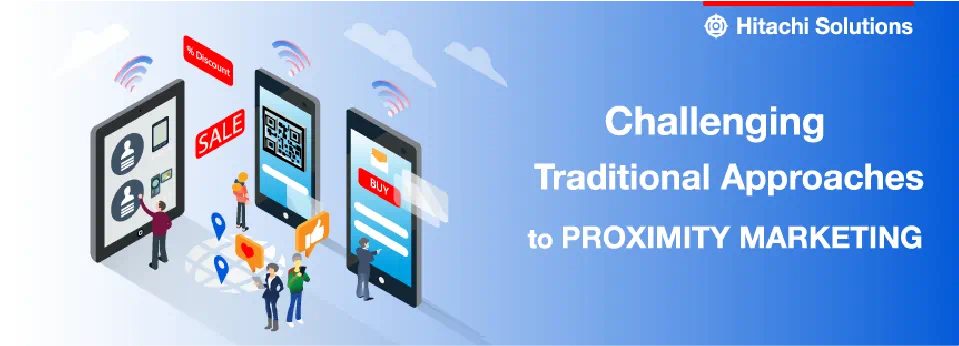

How Marketers Can Implement Real-Time Technology to Optimize Marketing Spend and Improve Conversions
How to drive company growth through customer personalization
Download the WhitepaperAlthough the term “location-based marketing” was coined relatively recently, retailers have been using location-based marketing in some form or other for decades, if not longer. Early iterations of location-based marketing included traditional forms of outreach, such as billboards and sign spinners standing on street corners.
Nowadays, location-based marketing is a bit more sophisticated, with retailers capitalizing on the latest technology — including mobile applications, internet of things-enabled devices, and Big Data — to entice shoppers and increase customer engagement. In fact, one popular form of location-based marketing — proximity marketing — has taken the retail industry by storm, challenging retailers to reimagine the way they advertise to customers.
An Innovative Approach to Marketing
Have you ever set foot in a store, only to receive a discount coupon or sale offer on your phone immediately upon entry? If you have, you’ve experienced proximity marketing firsthand.
Proximity marketing — also known as hyperlocal marketing — is a form of highly targeted marketing. Early modern proximity marketing efforts include Bluetooth-enabled beacons placed strategically throughout stores that send shoppers push notifications via mobile app. These push notifications can range from a special offer or a specific incentive to shop to a survey that gauges customer interest in certain products or offers.
Although major retailers such as Lord & Taylor and Macy’s readily embraced Bluetooth-enabled strategies, this form of proximity marketing has proven largely unsuccessful for a few key reasons. Current Bluetooth beacon technology is inaccurate, only capable of showing when someone is in a room rather than where they’re located in that room. In order to be truly effective, retailers would have to invest in a significant number of beacons spread throughout the store, which can be expensive. The Bluetooth-enabled method of proximity marketing also sends general broadcast-type messages, which can alienate customers if not properly executed. Add to all of that the fact that beacon technology is no longer on the cutting edge of proximity marketing efforts.
There’s a much better approach to proximity marketing that costs significantly less than Bluetooth and is far more effective, completely contradicting traditional wisdom around proximity marketing. This new approach uses geomagnetic technology in conjunction with your existing radio frequency fingerprint — that is, your existing Wi-Fi and Bluetooth beacons — to determine a consumer’s in-store location with incredible accuracy.
The concept is simple: Geomagnetic technology uses the magnetic field of a building’s metal framework to construct a virtual map, and the built-in compass and sensors in a shopper’s phone to show their precise indoor location in real time without the need for expensive physical infrastructure. This technology will be ready to deploy in the near future; early adopters are already seeing higher ROI. Regardless which technology you choose to use, you should ensure that all of your proximity marketing campaigns are opt-in to avoid privacy concerns.
Developing a Proximity Marketing Strategy
If you’re curious about introducing proximity marketing in your stores, know that deciding which technology or platform to use is only half the battle — the other half is developing a campaign strategy.
The entire purpose of proximity marketing is to deliver the right offer to the right customer at the right time, so it’s crucial that you provide shoppers with information they’ll actually find useful. To figure out what information shoppers find useful, you need insight into your customers’ personal preferences. Retail customer relationship management (CRM) analyzes customer data, such as purchase history, recent product reviews, wish lists, and more, to identify product and service preferences and provide a complete 360-degree view of the customer.
software analyzes customer data, such as purchase history, recent product reviews, wish lists, and more, to identify product and service preferences.
Armed with the right information, you can better understand your target audience, segment that audience, and tailor your proximity marketing strategy to consumers’ specific tastes and interests. In addition to providing valuable data for more targeted marketing, a retail CRM system can also automate marketing campaigns and provide marketing intelligence, so you can track the success of your campaigns.
Finally, it’s important to be mindful about how many push notifications you send. Although they’re intended to motivate shoppers, too many notifications can have the opposite effect. When developing a proximity marketing strategy, be conservative with regard to the number of messages you send.
Get Started with Hitachi Solutions
Proximity marketing is in a constant state of flux; what’s innovative now will be outdated in 3-5 years. Bearing that in mind, solutions providers have started to look into proximity marketing as a service in an effort to offer customers the latest technology as time goes on.
Hitachi Solutions is one such provider.
Our Retail Awareness ecosystem features Microsoft Dynamics 365 for Retail and proximity marketing and wayfinding capabilities. We’re working with industry-leading positioning platform providers to develop a proximity marketing solution that leverages emerging technology — including geomagnetic field location — to provide the most accurate results possible. When used in conjunction with our robust, retail industry-specific CRM solution, which provides a 360-degree view of your customers, as well as tools designed to enhance marketing, you can develop detailed, foolproof proximity marketing campaigns.
Want to learn more about how Hitachi Solutions can help you optimize your proximity marketing efforts? Contact us to start a conversation about using this exciting new technology to improve customer engagement.


